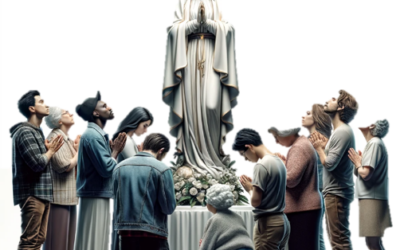Historically and biblically, it is plain that Jesus died on a cross. The Jehovah’s Witnesses, however, teach that Jesus died on a stake, not a cross.1 It really does not matter the shape of the piece of wood on which Jesus died. The issue is whether or not He shed His blood for our sins. The publications of the Jehovah’s Witnesses, however, raise this as a significant issue which they use to accuse historic, biblical Christianity of pagan influence, so it is worth pausing to consider the facts:
The Greek word, which in many Bibles which is translated into “cross,” is the Greek word “stauros” which means, “an upright stake, esp. a pointed one, a cross.”2 The word itself, therefore, can be used for either shape piece of wood. The details of the narrative, however, give us a clearer picture. If a stake were used, instead of a cross, then Jesus’ hands would have been placed above His head with a nail driven through His wrists. Since the wrists would most likely overlap, only one nail would be driven through both wrists. However, John 20:25 says,
“The other disciples therefore said unto him, ‘We have seen the Lord. But he said to them, except I shall see in his hands the print of the nails, and put my finger into the print of the nails, and thrust my hand into his side, I will not believe.'”
Notice the use of the word nails (plural) in reference to his hands (plural). It makes far more sense to say that Jesus was crucified on a cross with outstretched hands and one nail in each hand placed above each other on a stake. That is why it says ” …in his hands the print of the nails…”
Therefore, it is most logical to state that Jesus died on a cross with outstretched arms. This also corresponds with relevant archeological evidence. The remains of a crucified Jewish man named Yehohanon, who was executed in the late 20’s A.D. (not long before Jesus) under the administration of Pontius Pilate was unearthed in a Judean tomb. Forensic analysis of the remains indicates that he was crucified with his arms stretched apart. A nail was found still embedded in his heel bone. All these details accord with the description of the similar execution of Jesus under Pilate, and point toward a cross shape rather than a single, upright beam or stake.3
The testimony of the early Christians also points unanimously to a cross shape. A popular Christian document of the early 100s A.D. compares the cross to the Greek letter “tau” which looks very much like our “t,” and also speaks of the cross prefigured in Moses stretching out his arms over the battlefield of the armies of Israel.4 Justin Martyr (114-165 AD), who was from Samaria which is between Galilee and Judea where most of Jesus’ ministry took place, wrote that the Passover lamb prefigured not only Jesus but also the cross, because:
“The lamb, which is roasted, is roasted and dressed up in the form of the cross. For one spit is transfixed right through from the lower parts up to the head, and one across the back, to which are attached the legs of the lamb”5
Irenaeus also describes the cross’s shape as having points both up and down and to each side, as well as mentioning a post on which the nailed person rests.6 The “Palatine Graphito” (a late second-century piece of Roman graffiti mocking a Christian for worshiping the crucified Jesus) also pictures Jesus’ execution as being on a cross.7 Even some of the earliest New Testament manuscripts we have found (P45, P66, and P75) abbreviate the Greek word “Stauros” by omitting the “au” in the middle and putting the Greek letters for “t” and “r” on top of one another, causing them to form a “t” shape with a circle over it, or a graphic of a figure crucified on a cross.8 All of this together constitutes rather broad testimony that the earliest Christians believed that Jesus died with His arms stretched out on a cross. They not only represent early testimony but also lived in the world that Jesus lived in and would know better if crucifixions were not carried out in that manner.
On one final note, the Jehovah’s Witnesses will often point out that the cross is a pagan symbol in some ancient cultures, but that is meaningless. A cross is simply two intersecting lines. While it is a symbol used in some pagan cultures, it is also a normal letter used in many alphabets and often occurs in windows, architecture, and the design of street intersections. Anywhere straight lines or beams intersect it creates a cross. The cross was one of the Roman Empire’s methods of execution simply because putting two beams together to nail someone too forms a cross shape, just like so many other things do. Even if, however, the cross was, in fact, always a pagan symbol, Rome was a pagan culture! Why would it be strange for them to use a pagan symbol in their executions or anywhere else in their life? So the argument that some ancient pagan cultures used cross-shaped symbols has nothing to do with the question of what shape the piece of wood was that the Roman soldiers under Pontius Pilate used to execute Jesus.
Even here, on such a largely insignificant detail of history, the Jehovah’s Witness’s literature is entirely untrustworthy and unable to handle the most basic biblical and historical facts rightly.
References
| 1↑ | Reasoning from the Scriptures, 1985, pp. 89-90 |
|---|---|
| 2↑ | Enhanced Strong’s Lexicon, Oak Harbor, WA: Logos Research Systems, 1995. |
| 3↑ | Craig Evans, Jesus, and His World: The Archeological Evidence (Westminster John Knox Press, 2012) pg 123 |
| 4↑ | Ante-Nicene Fathers, Vol. 1 (Hendrickson Publishers, 2004) 143 |
| 5↑ | ibid, 215 |
| 6↑ | Ante-Nicene Fathers, Vol. 1 (Hendrickson Publishers, 2004) |
| 7↑ | Craig Evans, Jesus, and His World: The Archeological Evidence (Westminster John Knox Press, 2012) pg 77 |
| 8↑ | ibid |





